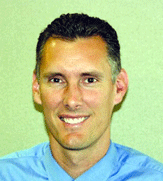If you have a medical problem, or something is bothering you or a member of your family, The Jackson County Times now has a local physician, Dr. John Spence, of the Panhandle Family Care Associates available to respond to your questions via e-mail.
I recently commented on the potential dangers associated with CT scanning and the feedback has been impressive. Given the apparent interest, I decided to use this space to elaborate on the risks of medical imaging.
In the United States, it is estimated that 62 million CT scans are performed yearly as compared to 3 million in 1980. Recent data from the New England Journal of Medicine suggests that CT scans may cause breaks in our DNA that results in genetic mutations and possible cancer. Over 20 million adults are unnecessarily exposed to potentially harmful radiation each year. Some even submit themselves to full body CT scans in hopes of "catching disease" early as a preventative (though unproven) measure. Physicians often order unnecessary scans in a so-called "shotgun approach" manner that allows for less likelihood of a missed diagnosis or potential resultant lawsuit.
CT scans are not benign. A single CT scan of the abdomen exposes patients to the radiation equivalent of 500 chest x-rays. X-rays have been linked to cancers of the lung, breast and thyroid as well as leukemias. An article in the New York Times indicated that Americans lifetime per-capita dose of ionizing radiation increased 600% between 1980 and 2006 with the bulk of the increase attributed to diagnostic imaging procedures.
Here are some truly scary statistics. The risk of developing a fatal cancer after one chest x-ray is 1 per one million. The risk increases to 1 in 2000 after just one CT scan of the abdomen. These exposures are nearly equivalent to those unintentionally received by survivors of the atomic bomb explosions in Japan during World War II. Furthermore, 1 in 143 women receiving a scan at age 20 will develop cancer (usually breast). The risk for a 40 year old drops to 1 in 284.
The FDA has never approved CT scanning for general screens of the body nor of any part of the body when there are no symptoms of disease. If this is the case, then why are so many done? Mostly, the answer is because we can. Lost is the art of history taking and physical exam skills – we rely on CT scans to make decisions, though they have never been shown to prolong life nor alter behavior (i.e. smoking). One example is cardiac catheterization. Stent placement has come under scrutiny because it does not improve clinical outcomes more than does optimization of medical therapy and modification of lifestyle. Yet, a cardiac cath exposes us to the equivalent of 120 chest x-rays. Caths may be better suited for unstable patients with persistent chest pain despite maximum medical management. There is a fear of missing the "big one". Unfortunately, in a litigious society such as ours, lawsuits (frivolous or otherwise) are commonplace and are a source of financial worry, psychological trauma and contempt for patients, insurance companies and the legal system.
It’s easy to order a test. Awareness of the potential dangers involved with the test is critical. The Hippocratic Oath says, "First, do no harm". Maybe we should listen.
Do you have any medical questions or concerns that you would like addressed? You can contact Dr. Spence by filling out the contact form provided on this page.

No comments:
Post a Comment